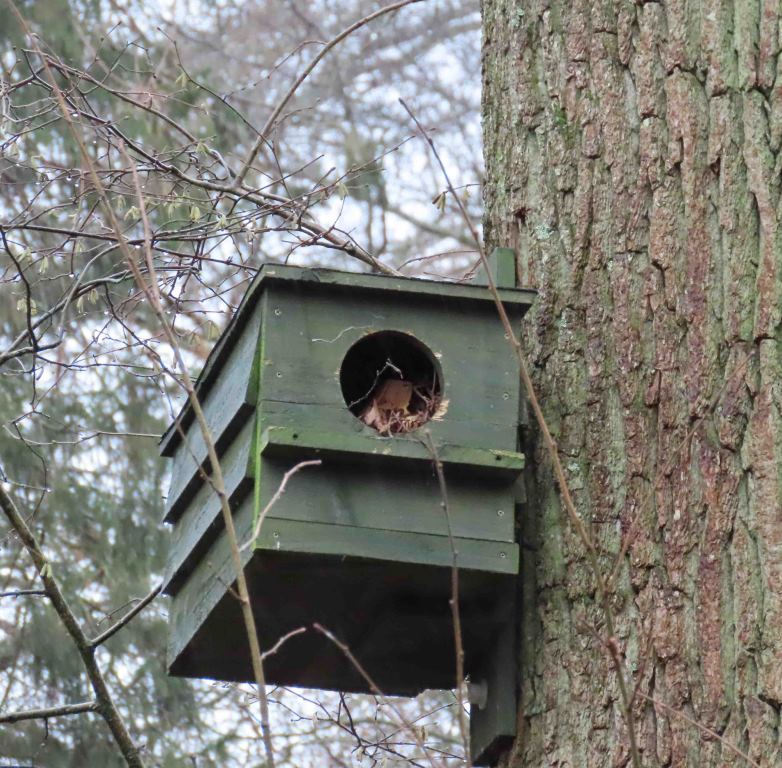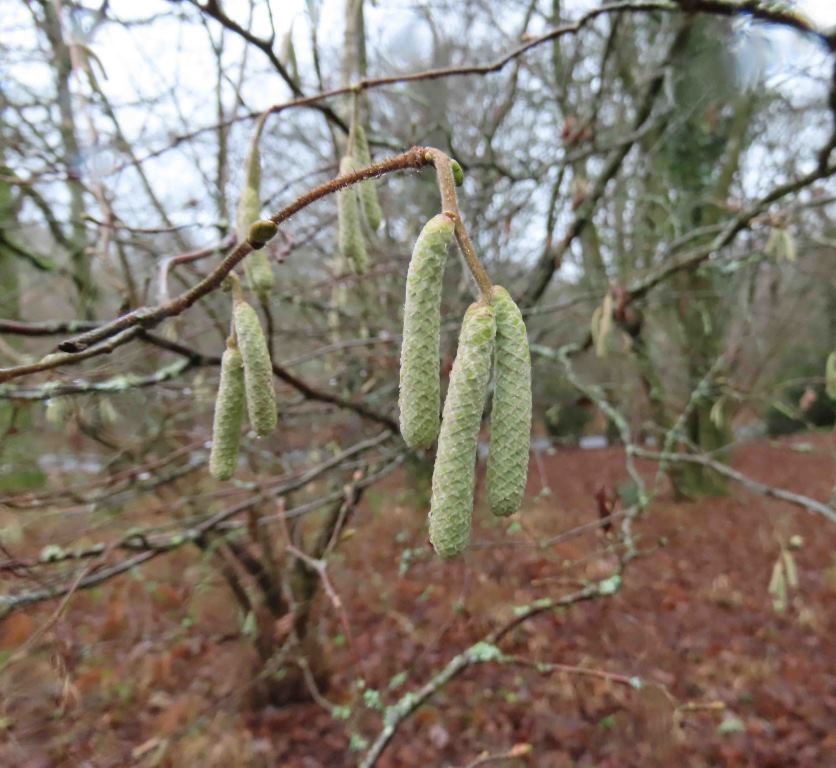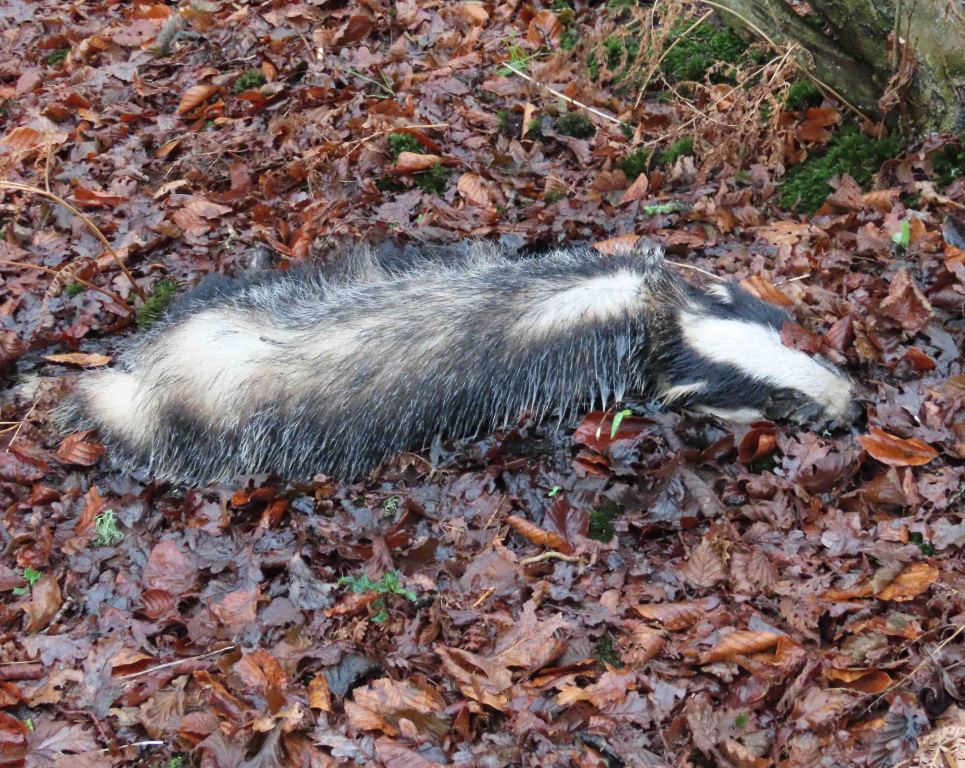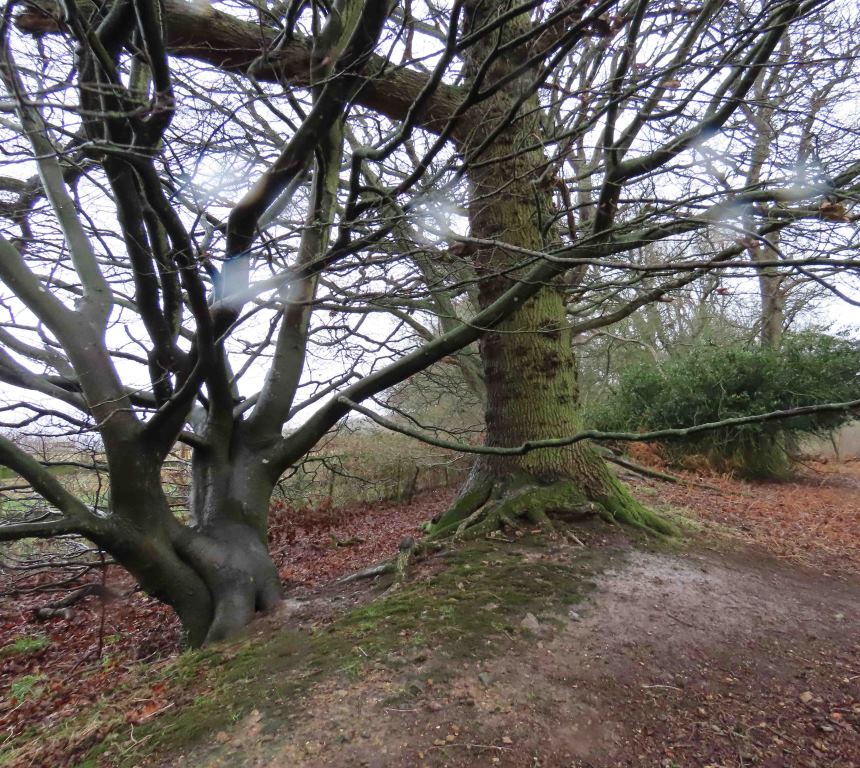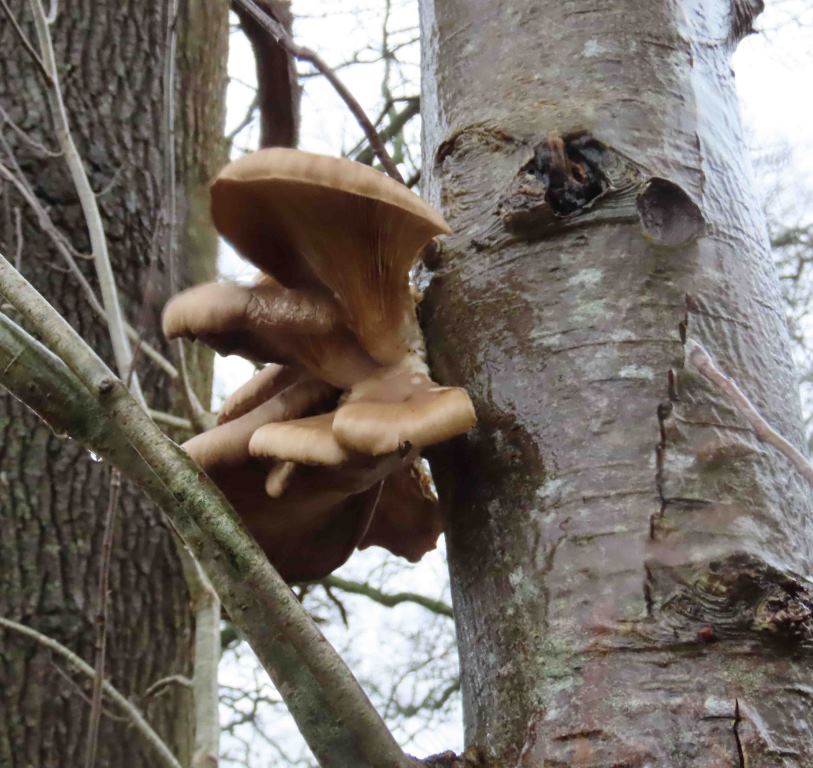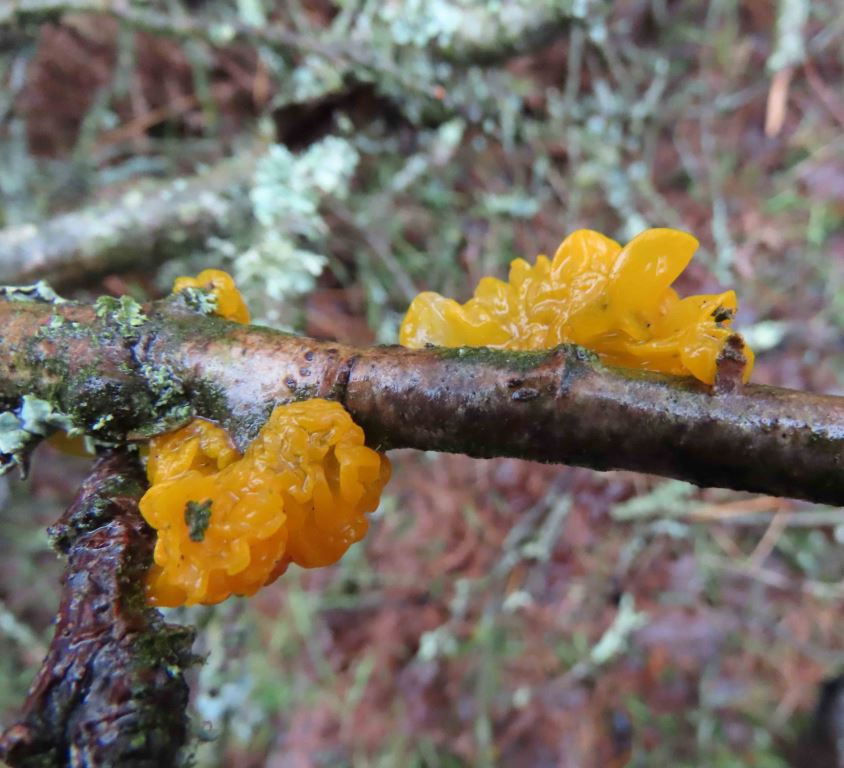The first field trip of 2022 was organised by John Lerpiniere on Saturday 8 January, on a morning of light but persistent rain. The Society would like to thank owner Mary Baylis for permission to visit the private Winterbourne Wood and Woodland Manager Mark Brown for leading the walk and telling the group about the management of the site. The wood runs from south-east to north-west on the ridge between Winterbourne and the valley of the River Lambourn at Boxford. The wood has tall standards of Oak and Ash, with a ground cover dominated by Bracken and Bramble. Because of Ash-dieback, most of the Ash trees will need to be felled at some point. The group set out north-eastwards along the track which runs along the lower side of the wood. A Tawny Owl nest box with the entrance hole in the middle was fixed to one of the trees near the track. Apparently young Tawny Owls can clamber around the tree before they can fly, and if they fall to the ground, they can probably claw their way back up to the box. In contrast, Barn Owl chicks are not good climbers, so Barn Owl boxes have the entrance hole near the top of the box. Leaves could be seen inside the box and a Grey Squirrel was spotted leaving it.
Most of the present day wood was depicted as woodland in old 18th century maps, but a section in the centre of the wood had been open farmland at the time. By the 19th century, all of the present day wood was shown as woodland. Mark explained that there had been a dense covering of Alder in the formerly cultivated section, but this had mostly been cleared in two stages. In one section, which was watered by springs, the young Alder was growing back vigorously, while in the other drier section it had almost been eliminated. A Buzzard flew across the eastern edge of the wood. Three separate Roe Deer were disturbed, showing their pale rumps as they raced away. Mark said that there were also resident Muntjac Deer and occasional visiting Fallow Deer. A Primrose in flower was a surprise sighting. There were rosettes of Marsh Thistle and leaves of Barren Strawberry, Greater Stitchwort, Lesser Celandine and Bugle were noted. The Spindle bushes had pink berries and the first catkins were appearing on the Hazels. Mark informed the group that the wood has Grass Snakes and a good population of Slow-worms. He showed a picture of five adult Slow-worms which had been found when a wood pile was moved.
Towards the northern end of the wood, two Hares which had been sheltering in the Bracken were disturbed. They looked surprisingly large to those of us who are more accustomed to looking at Rabbits, or who only ever see distant Hares. The route then climbed up towards the ridge on western side of wood, passing various springs and seepages on the way. A bank at the top of the ridge marks the parish boundary between Winterbourne and Boxford. Along it grow a magnificent collection of big old multi-stemmed Beech trees. Bluebell leaves were poking up through the leaf litter. There were a number of active Badger setts and a dead Badger was found nearby. Several members of the group walked through the Bracken below the line of the ridge and disturbed a Woodcock, which flew rapidly away. A Hoof Fungus on Oak and one of the Oyster Mushrooms on Rowan were inspected. There were a number of Spurge-laurel plants which would soon be coming into flower. Across the valley, Mark pointed out the location of the Boxford Roman mosaic which had been rediscovered in 2017.
The walk continued over the top of ridge to the south-facing slope above the lane. Wood Sage, Wood Spurge and Foxglove were noted. Primroses are abundant here in spring. The open clearing where they grow had been dominated by Bracken, but twice-yearly cutting over about 7 years has almost eliminated it. The flowery grassland is now a good place to look for butterflies in spring and summer. A second Woodcock was disturbed from the Bracken on the walk back to the entrance track. Mark pointed out a spectacular standing burnt Pine trunk. A work party had had a bonfire some distance from the tree. At the end of the day, the fire had been raked over and the surrounding vegetation had been damped down. But there must have been dead roots underground which caught fire, because about 3 weeks later, Mark discovered that the pine trunk had burnt out and the surrounding ground had dropped by about four inches. Finally, Yellow Brain fungus was found beside the path on a dead branch.
Pictures by Fiona Brown

